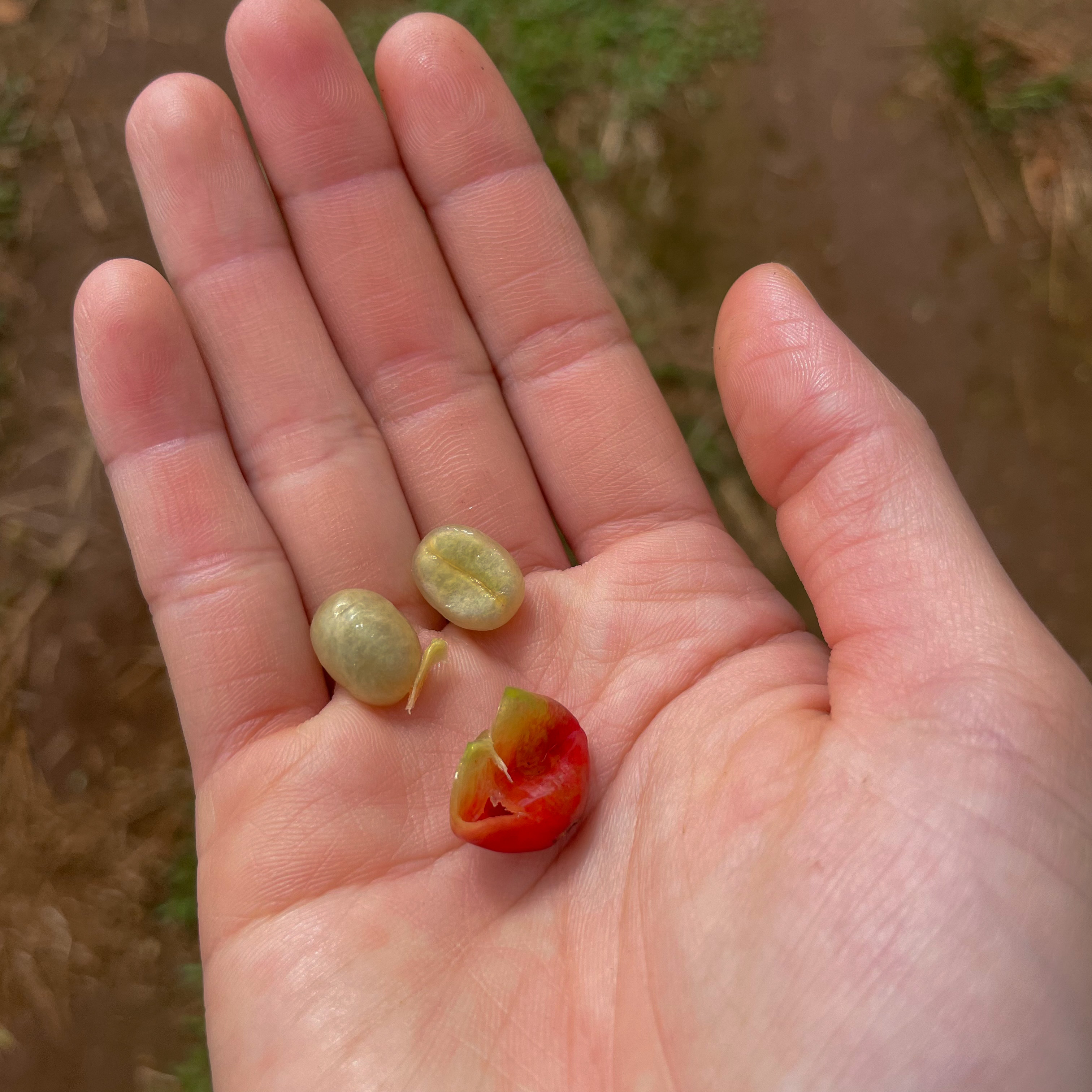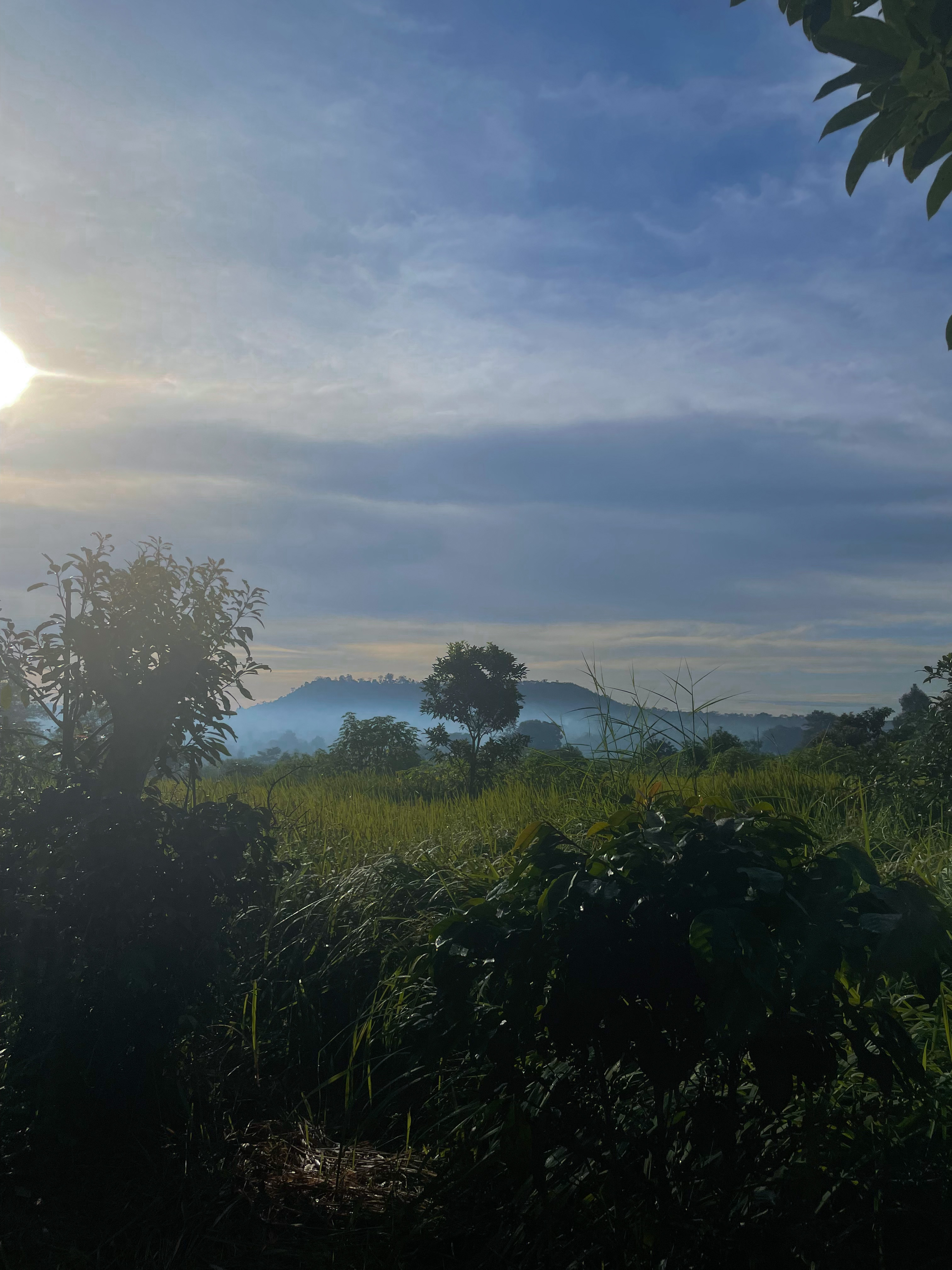Maya Bian
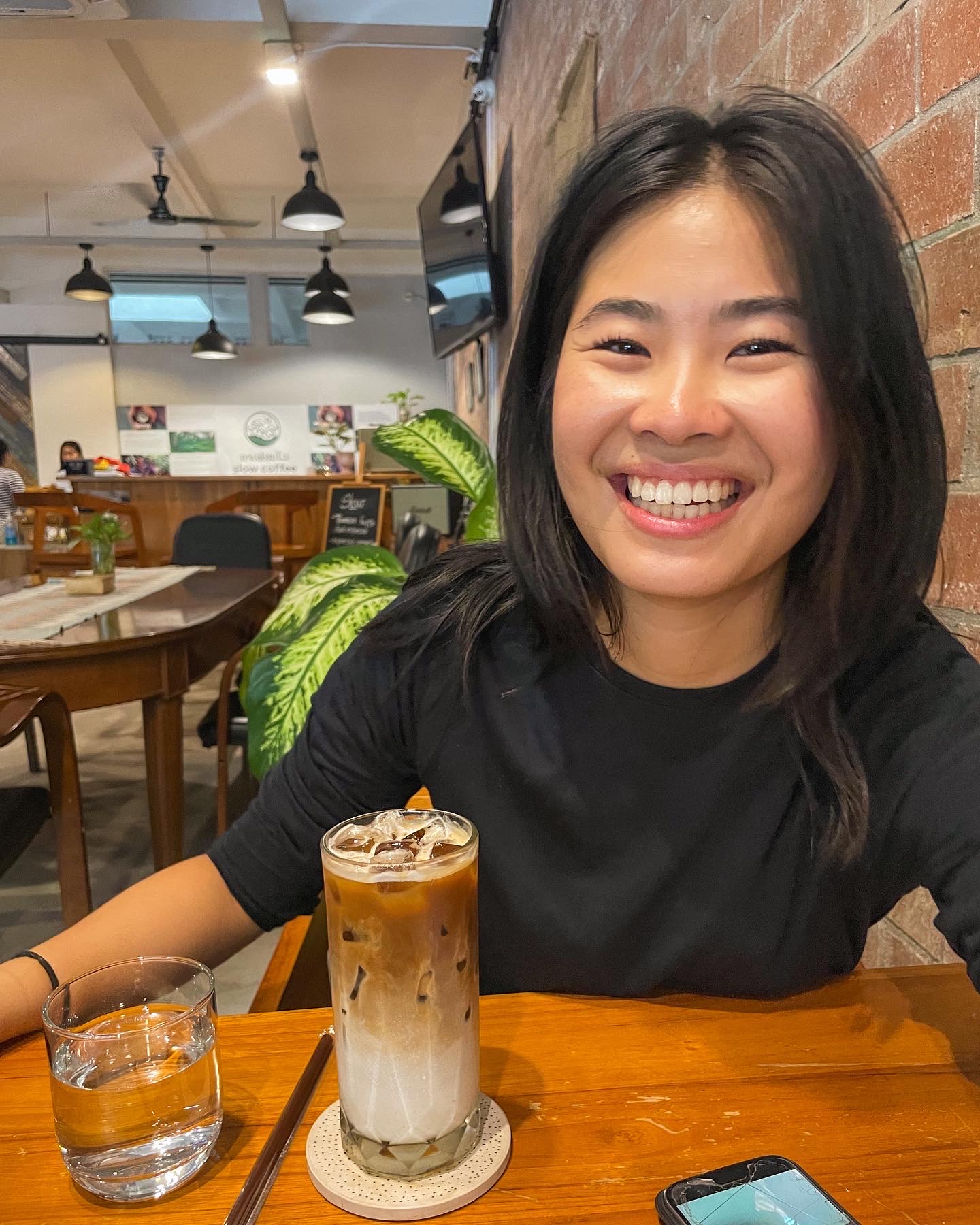
Maya is a Princeton in Asia Fellow in Vientiane, Laos
Best viewed on desktop | maya.al.bian@gmail.com | Github | LinkedIn | Resume
8 October 2022
A songtaew, a café in Paksong, and a coffee farm
I have been in Champasak Province in southern Laos for around six days now. Two projects for work were to occur down here, split by two weekdays plus the weekend. Instead of returning back to Vientiane, I decided not to leave with the team and instead stay by myself and explore the area and some of the natural beauty here. Since landing in Laos about a month and a half ago, I have rarely been without the presence of other people I know. This was to be the first time I’ve traveled alone in Laos, and also the first time in a long time I’ve traveled alone abroad.
I spent most of the first day alone in a hostel in Pakse working remotely. Early the next morning, I planned to travel to Paksong, a town about 50 km from Pakse. Paksong is a small town, and it itself does not have any tourist attractions, or other reasons for tourists to visit. Rather, it is a gateway into the Bolaven Plateau, an elevated region of Laos significant for its coffee production and also as the setting for one of the most heavily bombed regions of Laos and generally during the Vietnam War due to its proximity to the Ho Chi Minh Trail.
I booked a two night stay at a homestay on a coffee farm near Paksong, located on the plateau. To get there, I needed to take the songtaew ສອງແຖວ (pronounced song-tay-o), a local open-air passenger truck whose name directly translates as “two rows” (referring to the two rows of seats within the vehicle), to Paksong, where the homestay owner would pick me up to drive an hour to the homestay.
The pick-up location was the Pakse morning market, which was only just starting to become active when I arrived at 7:40 am. The location is convenient—frequent passengers of the songtaews are venders and workers who commute between the local towns, and the songtaews also carry a lot of cargo to and from the market; boxes and burlap sacks and packages of items unknown to me. The songtaew was not to leave until 9 am, so I walked around the market a bit before taking my seat in the songtaew to wait for departure. While there, women in the market approached the songtaews with goods—coffee, bread, grapes, sandwiches—asking if anyone would like anything (in Lao, of course). They returned frequently to ask—a decently successful strategy as the idea of buying something from them became more alluring each time they came by and presented their products. While I did not ultimately buy anything, I relished that I could recognize when they told me how much their goods cost. A month and a half in and at least I can say I know my Lao numbers.
We were off at 9:20 am packed with goods, seven adults, and 3 kids. Two additional women and a young couple with a baby joined on our way to Paksong. One older man was wearing a US army jacket—I’m sure many are still in circulation within Laos, but I wonder where he got it from and what meaning, if any, it holds for him.
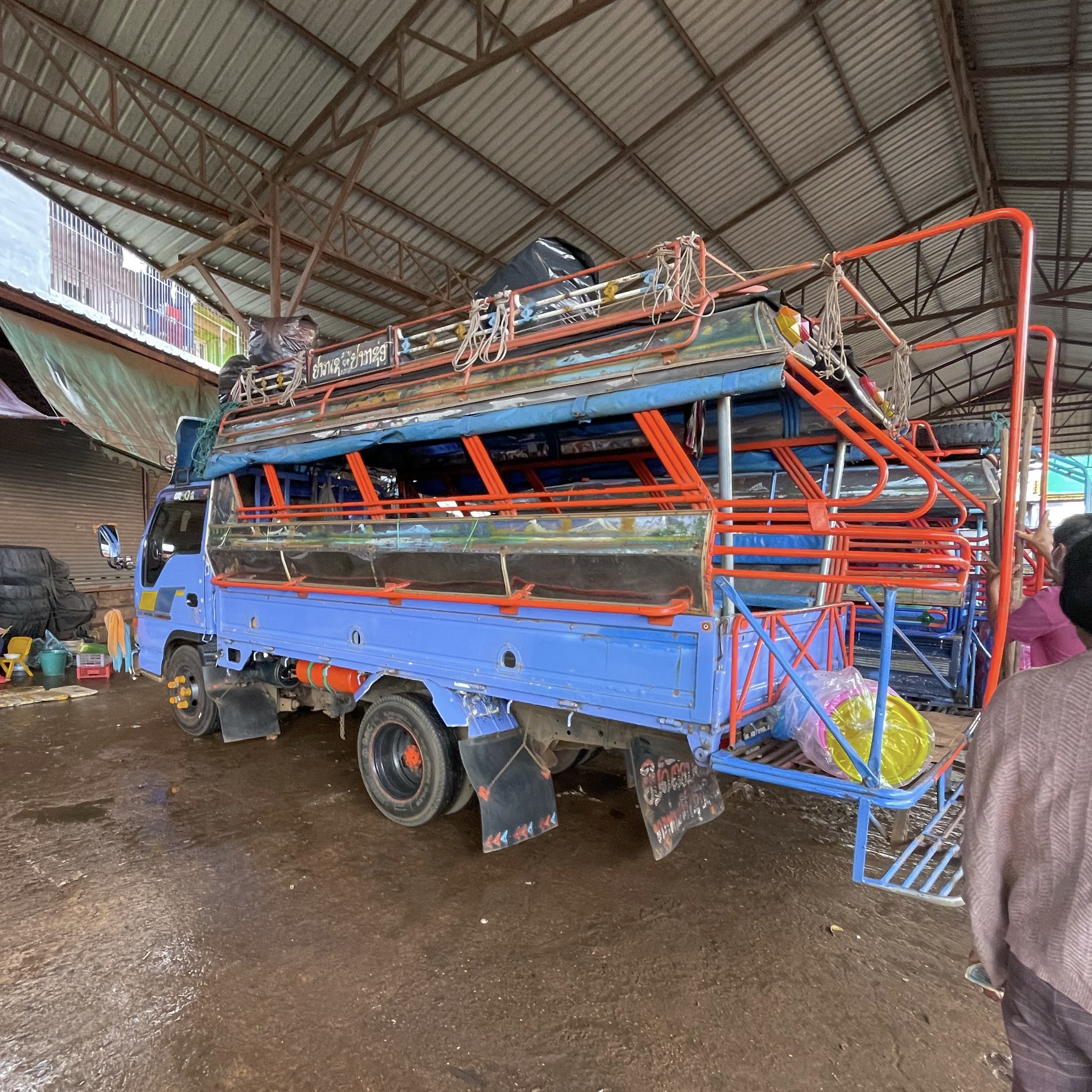
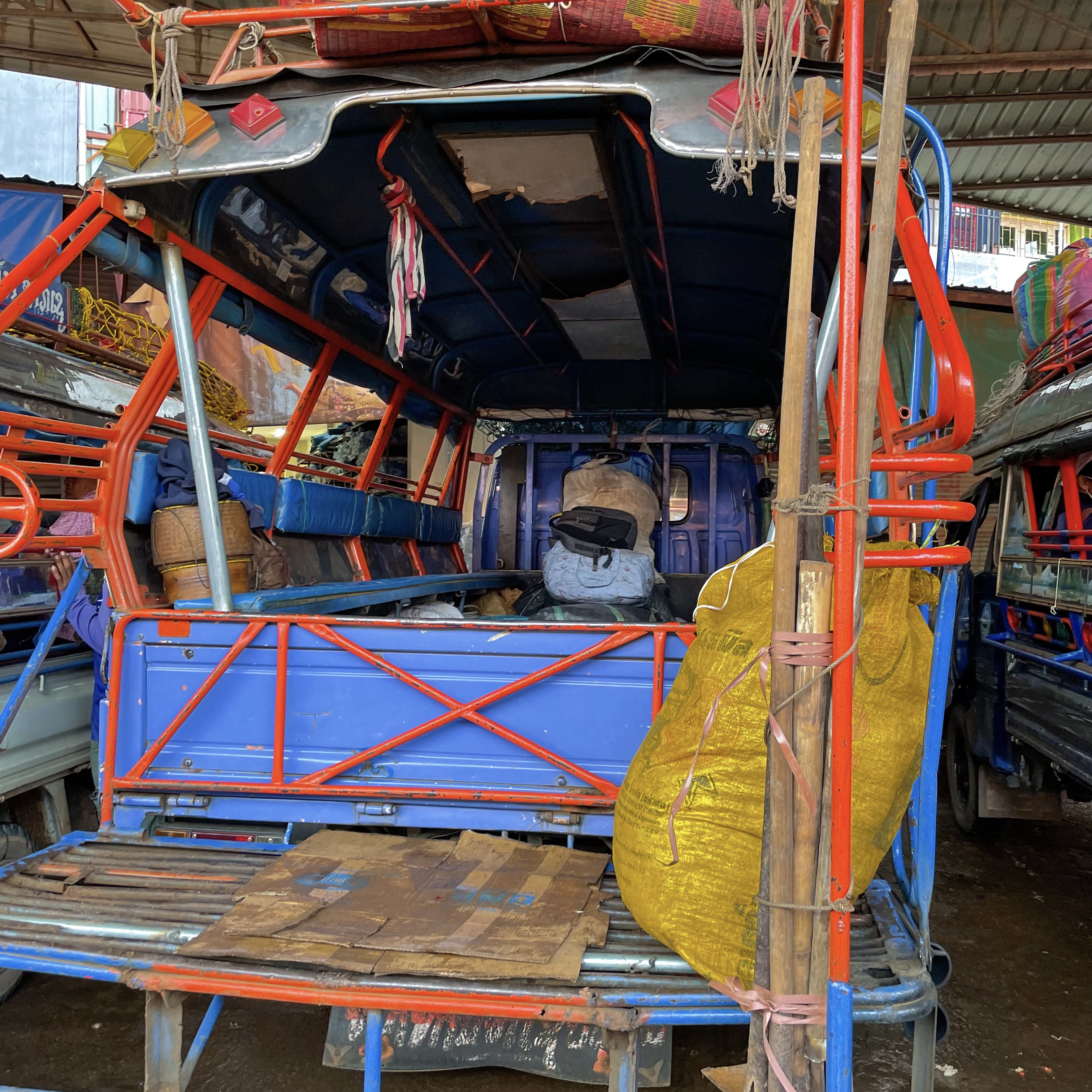
The songteaw is a slow but quite pleasant ride—although I imagine that would not have been as much the case if it had been raining. Their schedules are unclear and irregular—there is no website or person to contact (except the driver directly) to find out if a trip is happening. At least one back-and-forth trip happens consistently in the morning, but apparently evening trips occur depending on the volume of people who show up needing the transport. Thankfully, I did not have to figure this out by myself—the hostel manager patiently facilitated my journey to the morning market and to the songteaw. This adventure was therefore very low risk, yet higher risk than anything I’ve yet tried in Laos, given that I was alone. And I was reminded why I like traveling and being alone at times (not all the time of course - I do really love sharing experiences with others as well)—the risks I take are larger (relatively, given that I am alone), and I learn and grow through sitting in and navigating through the risk and associated discomfort (although being with other people can also expand risk tolerance and therefore the level of risk I’m willing to take on, but that’s a separate thing than what I’m talking about here). I come out of experiences I handle alone feeling more accomplished and confident in myself because I had full responsibility over the decisions that needed to be made. In those instances, I cannot necessarily seek comfort in someone else. And, unlike traveling with Lao colleagues, I have no shield, and my experiences are not facilitated for me. In being challenged to be unsure, adapt, and try new things without (a) travel partner(s), I become more present, more observant, and more connected to my surroundings. I like being at that point and on the precipice of risk, mostly because I am more aware of—and therefore more intentional about—my decision-making. And I would like to bring that practice and focus and awareness to my everyday life, where I feel like it can sometimes be absent whether I am with others or not, but I am happy finding it here for now.
The songtaew didn’t exactly stop at a station in Paksong—it more so continued through the town dropping passengers off at their exact location as they called out. This was confusing for me—but I had shared my location with the homestay owner, and he was able to catch up to us as the songteaw stopped at one of its other passenger’s destination. When the driver helped me off, he asked me if I was Korean or something else I did not catch—I replied “Chin” (pronounced tjeen)—the adjective that indicates something is Chinese, but in an unbounded and therefore incorrect form. In my Lao language lesson a week ago, we learned that country adjectives are almost always supported by a noun, so “chin” by itself is not a term. For example, if I wanted to say “I come from China,” I would say “Khoy ma te pathet chin,” where “pathet chin” is China, and “pathet” is the word for country. If I wanted to say “I am Chinese,” I would say “Khoy menh khonh chin,” where “khonh” is the noun for person. Yet this phrase has the connotation of national original, and I am an American citizen, not a Chinese one (at the moment of writing, I decided to ask my homestay host how to say I am Chinese American—and apparently I can indeed just say khoy menh khonh chin amelika—I will try this out in the future).
But this man was, of course, not asking about my national origin. He was asking for my ethnicity, in not so many terms, and he was most definitely not asking me for a fumbled response detailing the relationship between my cultural, national, ethnic, and racial identity. So I gave him chin. It was not the first time someone has tried and incorrectly guessed my ethnic background. A few weeks ago, on three separate occasions, people thought I was Japanese, Hmong, and Lao respectively. When I was in Pakse with the work team, some men on the side of the road called out to ask if I was Korean or Vietnamese. The hostel manager in Pakse also asked about my background, explaining she was confused because I look Asian but have an American passport, so she thought I might be from Hong Kong. It shouldn’t, but I am still surprised that race, ethnicity, and nationality are not so clearly delineated in places outside the United States, or are defined or prioritized differently. I have also been surprised that more people have not guessed that I am Chinese, especially given the salient presence of the Chinese in Laos. It is noted in the signs that include Chinese writing and in every day and not-so-every-day conversation about the Chinese trying to buy my homestay host’s land; of Chinese gangsters running the “Golden Triangle” area, the place where Thailand, Laos, and Myanmar meet; of Chinese business men coming in refusing to learn Lao and instead soliciting semi-exploitative business-romantic relationships with Lao women to manage their everyday lives; and of Chinese companies mass farming produce in Laos using lots of pesticides and chemicals so much so that Lao folks claim they taste a difference and choose not to purchase Chinese produced produce.
I am immensely aware that being ethnically ambiguously Asian has, however, significantly eased my transition into Laos as well as enabled ease while traveling. While people are aware I am not from here, they seem less interested in prying than might be the case otherwise, although this is conjecture and not a tested fact (if any one of my non-Asian friends would like to come here and try this out for me you are welcome), and when I am dressed more traditionally, I can be quite inconspicuous. While in the field this past week, I wore a sinh—a traditional Lao skirt—throughout my time accompanying the team to villages and health offices to conduct interviews, and my colleagues graced me with comments about how I looked just like a Lao girl.
There are no shortages, however, of opportunities where I am reminded that I am most definitely not that. After getting picked up from the songtaew, my host brought me to CC1971 Café—a wonderful coffeeshop in Paksong with the most delightful coffee—to wait for the arrival of a group of Lao tourists also staying at his homestay for the night. CC1971 used to be a district power plant. The plant, and the surrounding area, experienced heavy bombing from US F105s, supersonic fighter-bombers. The building still retains much of the damage wrought by the strikes, has a half-inside-half-outside design, and displays much of the remaining missiles and aircraft artillery as part of the interior and exterior design.
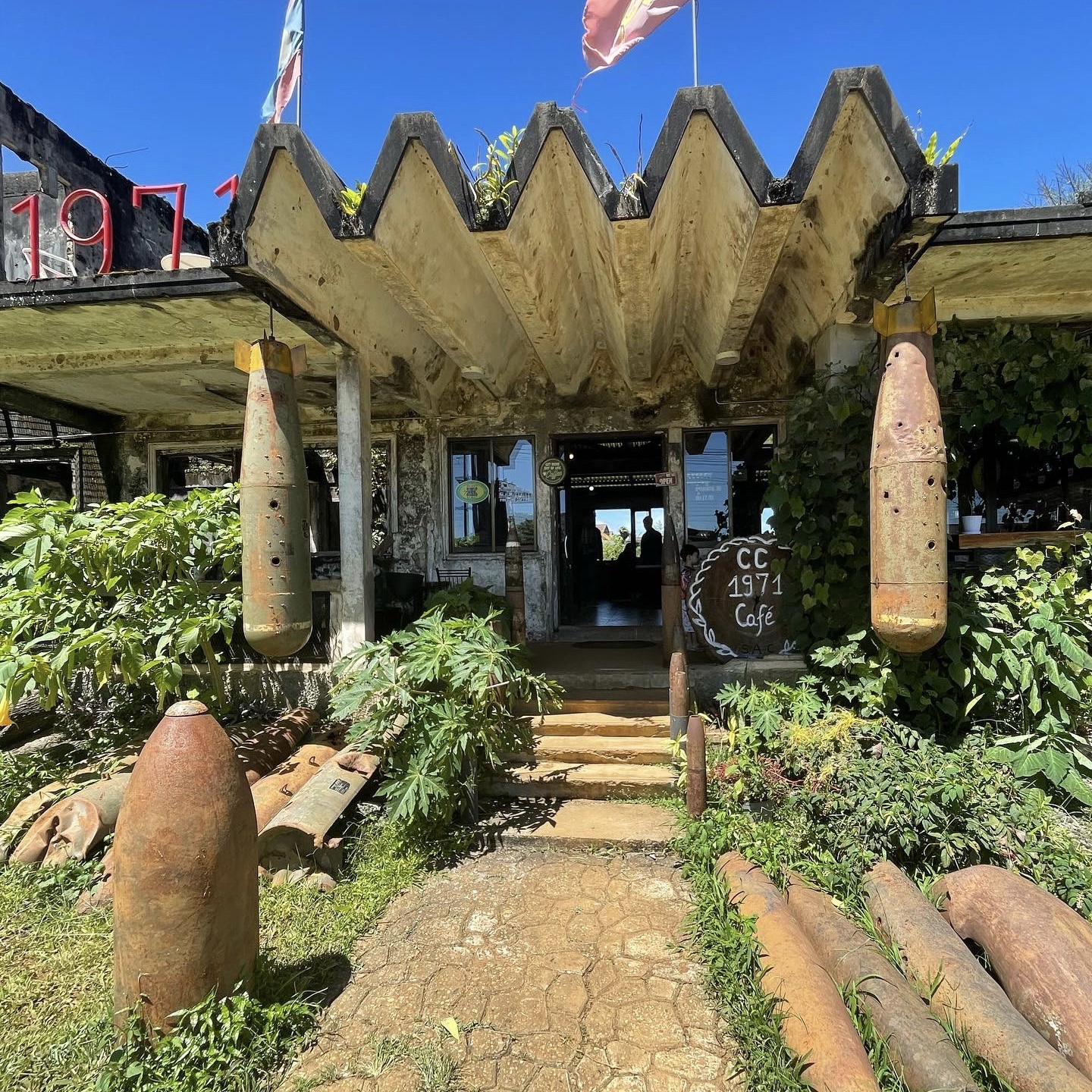
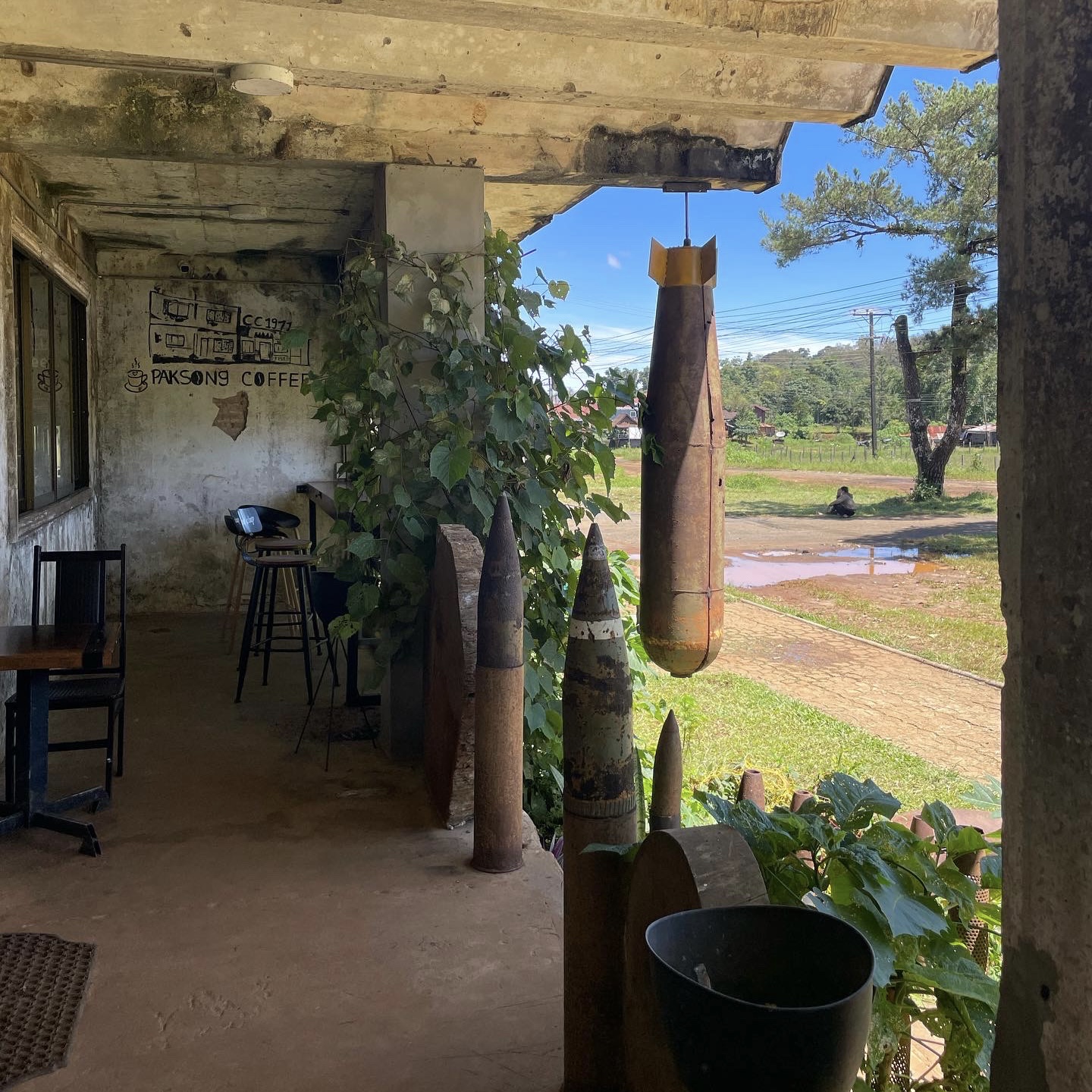
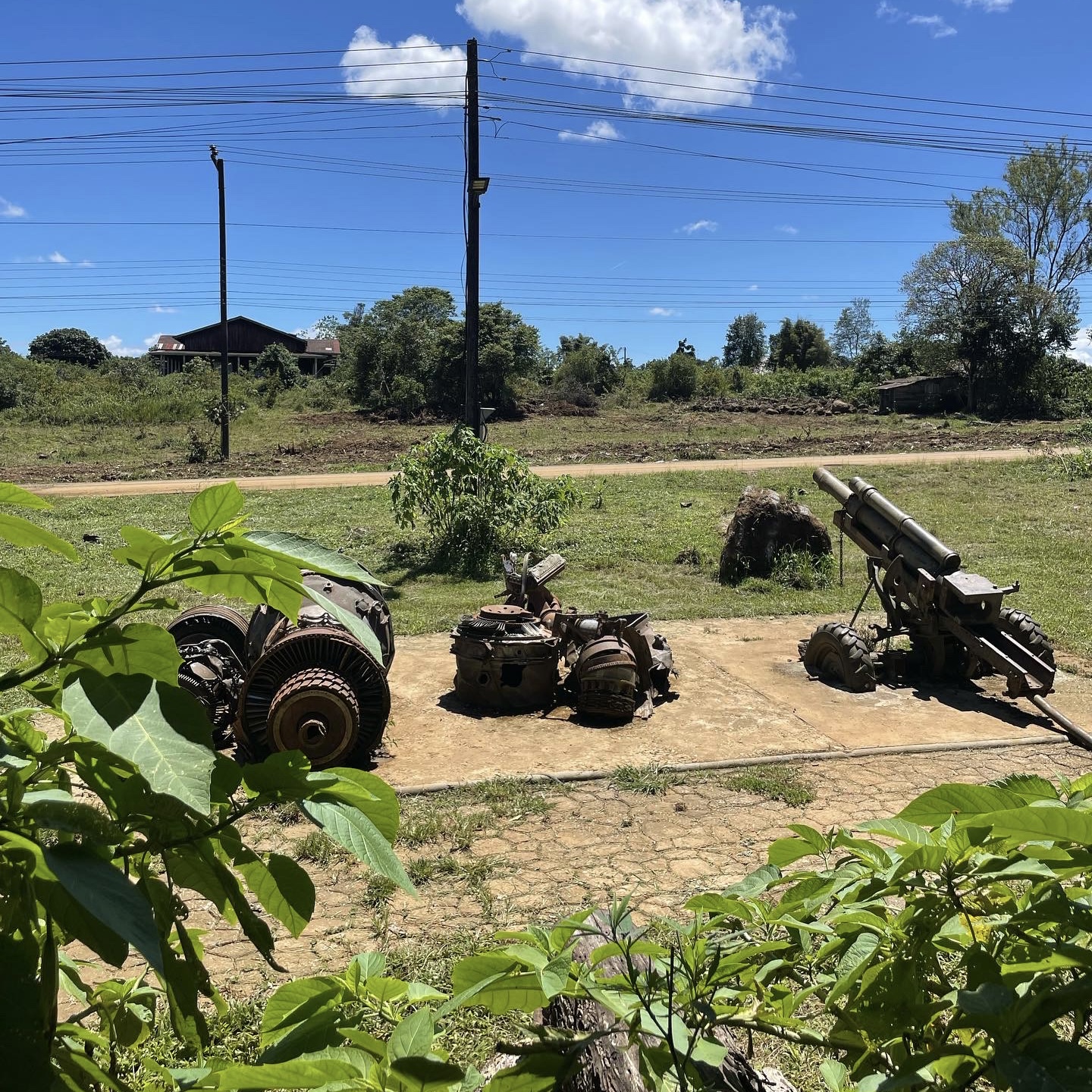
As I sat there and sipped my coffee, there was such a contrast between the people briskly walking into the shop who did not spare the bombs a second look and the bombs/missiles themselves, as imposing as they are. Perhaps for many of the customers, the missiles exist as an irrefutable fact of life, already mentally dealt with as best as possible long ago. There is nothing to come out of ogling or pondering them. For me, however, CC1971 was the first time I bore witness to an explicit display of American bombing in Laos. And they were so casually displayed! When I took a closer look at the missiles, I could see more information about their model and manufacturer. And, right there on one of the big bombs were the words “MFR: CULLMAN METALCRAFT, INC.”
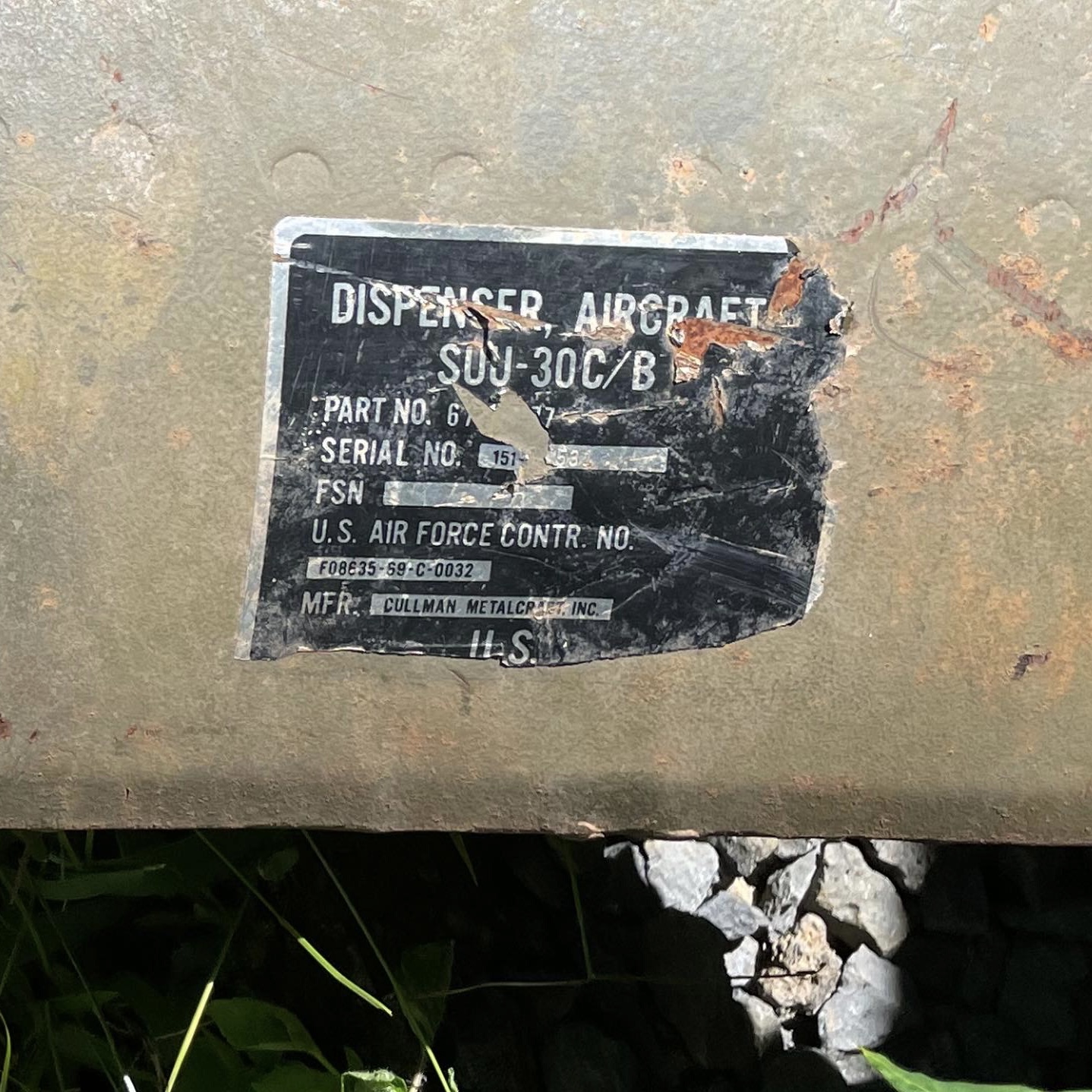
Cullman, of Cullman, Alabama. Alabama, my home state. In my first Princeton in Asia application (submitted during the year COVID shut everything down), I wrote about how my experience coming across a Lao Buddhist temple in southern Alabama inspired me to learn more about Laos and pursue a PiA fellowship. It seemed a very weird and important twist of fate that on a solo trip in a southern Lao province, I would come face to face with a bomb manufactured in my home state, where I also first drew inspiration to come here. In the same period of sitting at the café, some customers were also speaking Chinese, and I heard them exclaiming and wondering aloud if the bombs were unexploded. Many aspects of my identity seemed to intersect all at once, in this café in Paksong.
I am aware that I am not the Chinese nation-state or the US nation-state. But I feel some sense of responsibility to make amends on behalf of both entities for whatever transgressions they have committed. In that way, then, one might say I do feel pulled by some imagined national or cultural belongingness by both China and the US, but it may be more so that I recognize that assumptions of that sort of belongingness to either/both nation-states will be imposed on me by others whether I like it or not, and I would like to be better informed when I have those relevant conversations.
I have been meaning to read more literature about Laos, but that goal has fallen a bit to the wayside. While at the café, with all these thoughts swirling in my head, I downloaded a book that had been on my reading list for quite some time: “A Short History of Laos: The Land In Between,” by Grant Evans. As I’ve started to read it, I already feel more grounded. It has, generally, been harder to learn about Laos than I expected. Unlike when learning about China, there is a distinct lack of English language resources and literature for learning about Laos. And, I thought it wouldn’t be too bad if I came in with a blank slate and unfamiliar with the social, cultural, political, economic, and geographic context of Laos (come on, Maya, you can just say unfamiliar with Laos there). I also deeply desired to have a new experience where I would have to learn to adapt and look and see without “knowing” everything. But, I have come to realize that I have built a lot of faith in and become quite reliant on social science literature to help me better understand the world around me. I think, particularly, there’s a certain dimension of truth in the stories social scientists tell, and I enjoy using their writings to help me develop my worldview and the language and frameworks I use to think about the world. While I am a bit afraid that my habit of referring to The Literature has made me less perceptive or analytical on my own, I am also aware that there is knowledge and context that I simply should know, and after a month and a half of being in country, I think I can more constructively engage with the literature on the region and link it to my own observations.
After we finished at the café, my homestay host and I met up with the other group staying for the night. We went on a jeep tour of the Bolaven Plateau—which is also a large inactive volcanic field and is populated with many small mountains (volcanoes??)—and visited two hidden waterfalls in the area. According to my host, the draw of the stay for the Europeans is the coffee [process] and the minority villages, but Lao people don’t care about that. In this situation, I most definitely do identify with the Europeans, but because I am a single person, I have been following the itinerary of the Lao groups who are visiting. This has, unfortunately, not included the coffee roasting and production process nor visits to the local ethnic minority villages, but it has included an early morning run around the farm up a mountain, playing soccer with my host’s six year old son, who then proceeded to take me to the river flowing behind the home to swim, have me taste a coffee berry and a sour apple, show me the avocado trees, and take me on an excursion up the mountain once again.
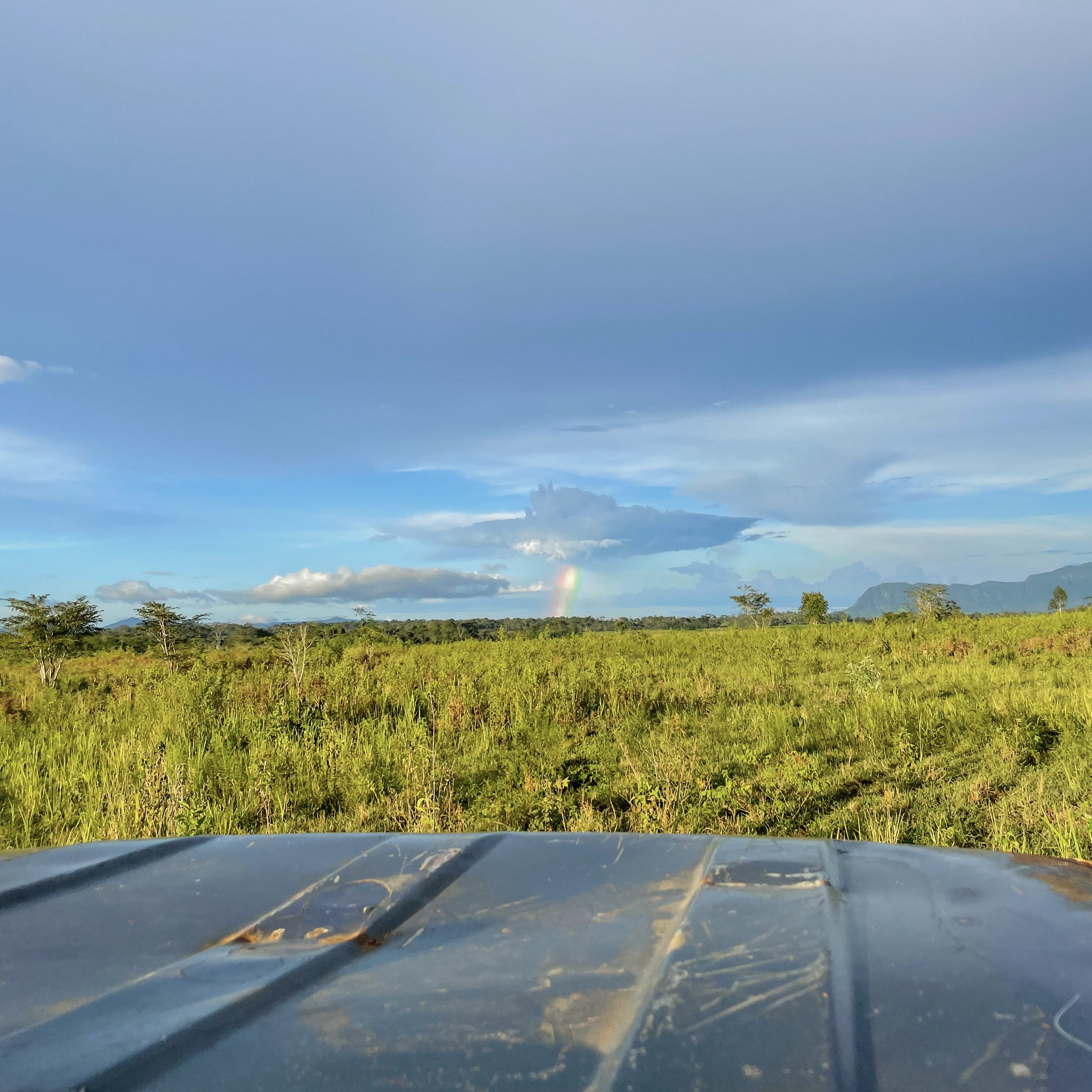
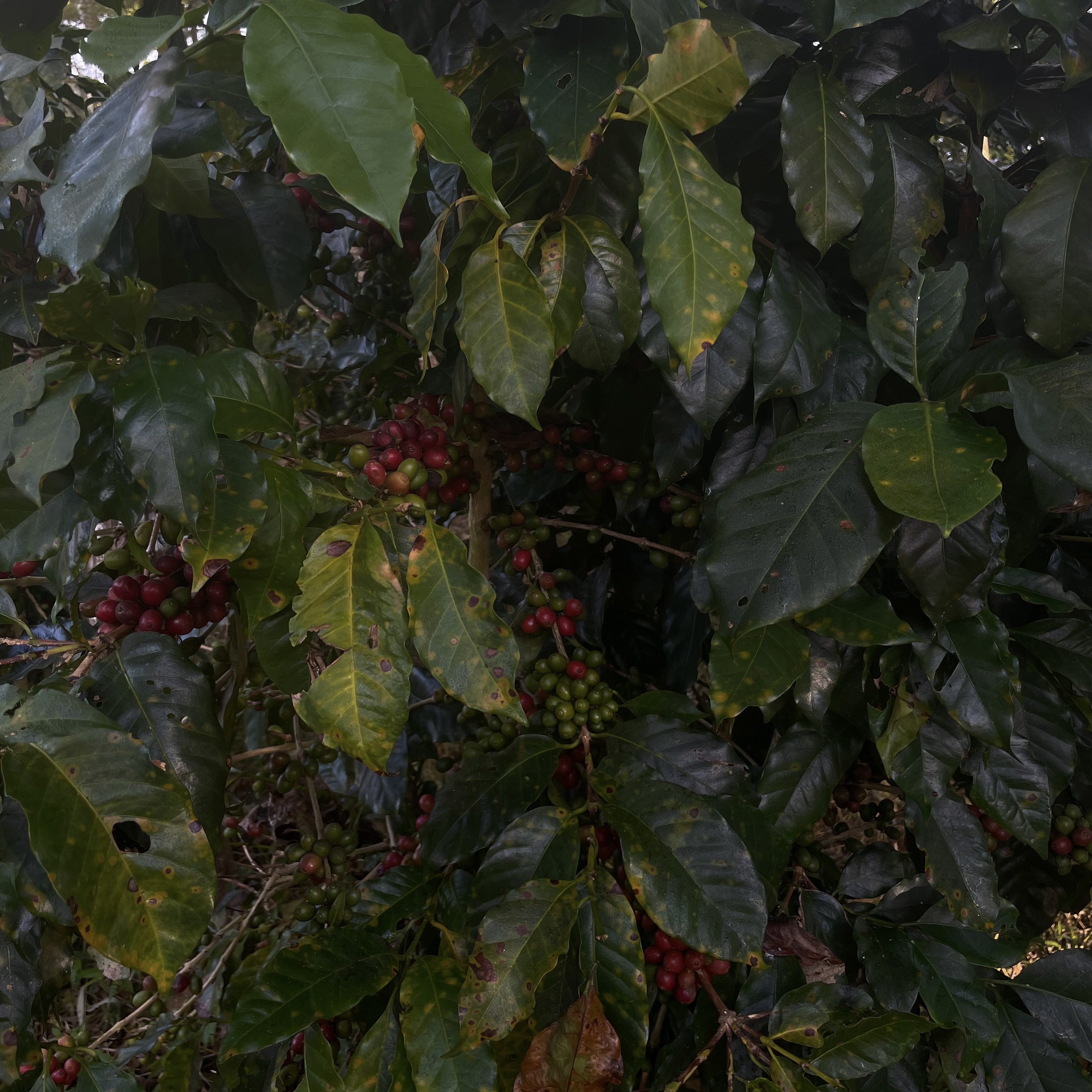
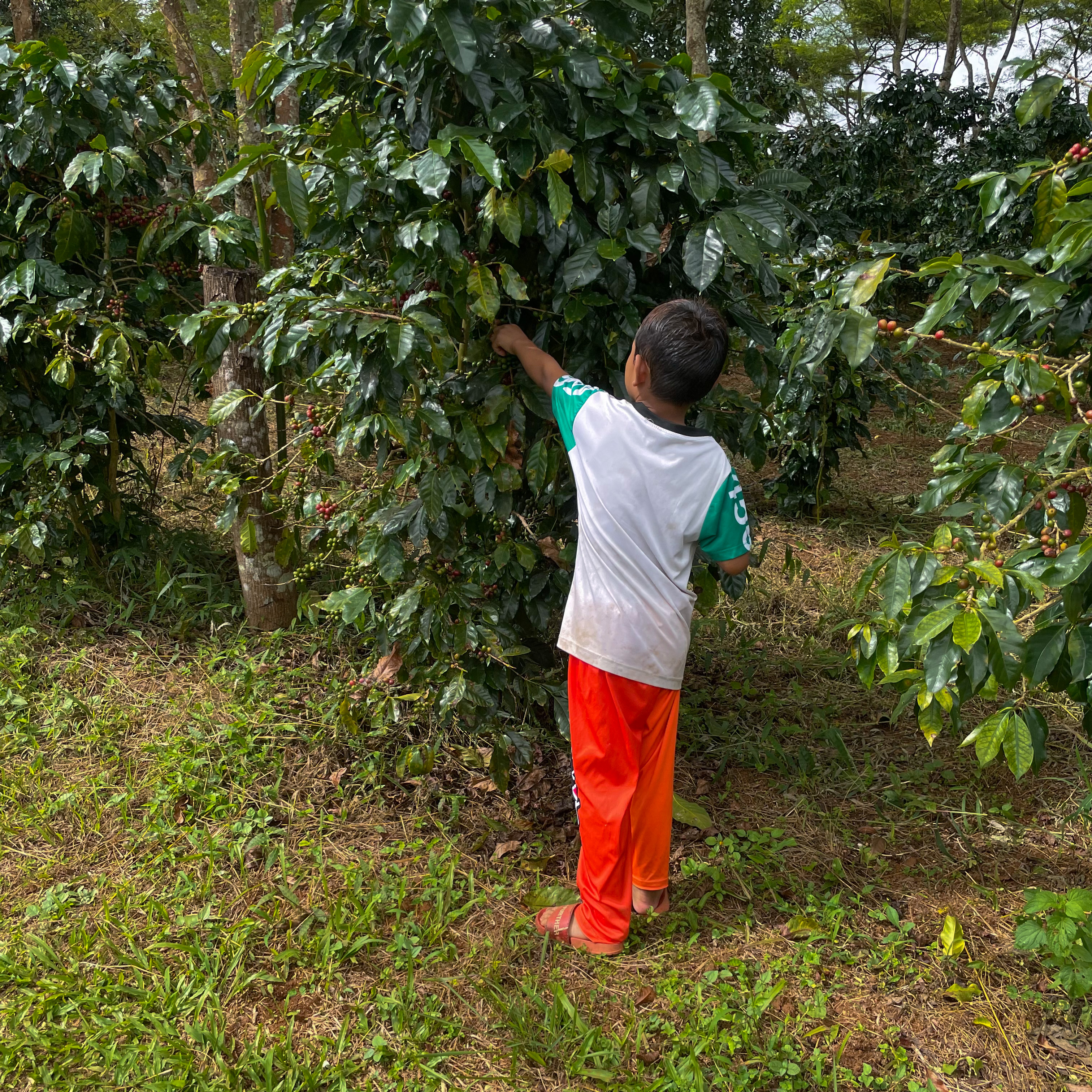
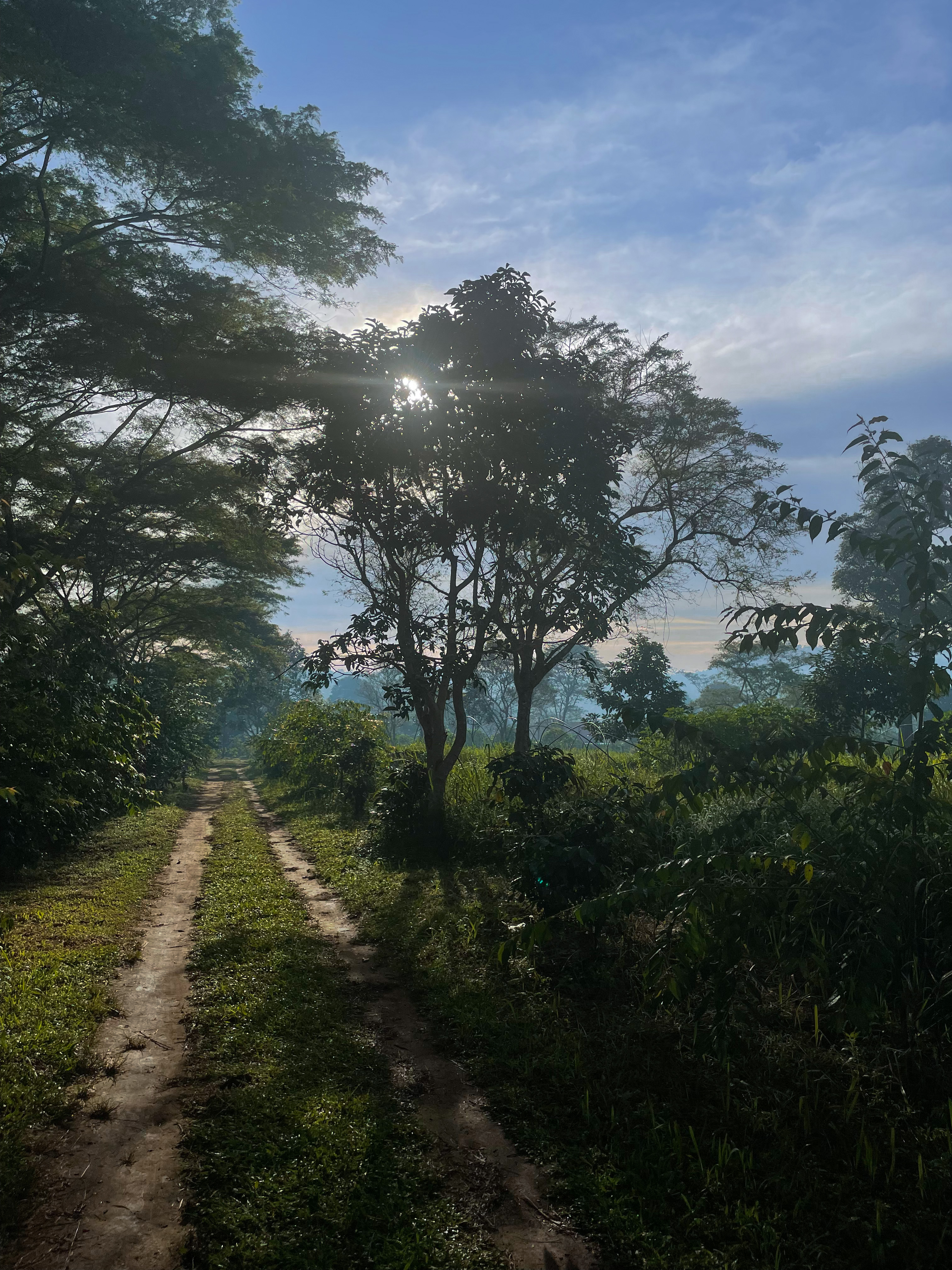
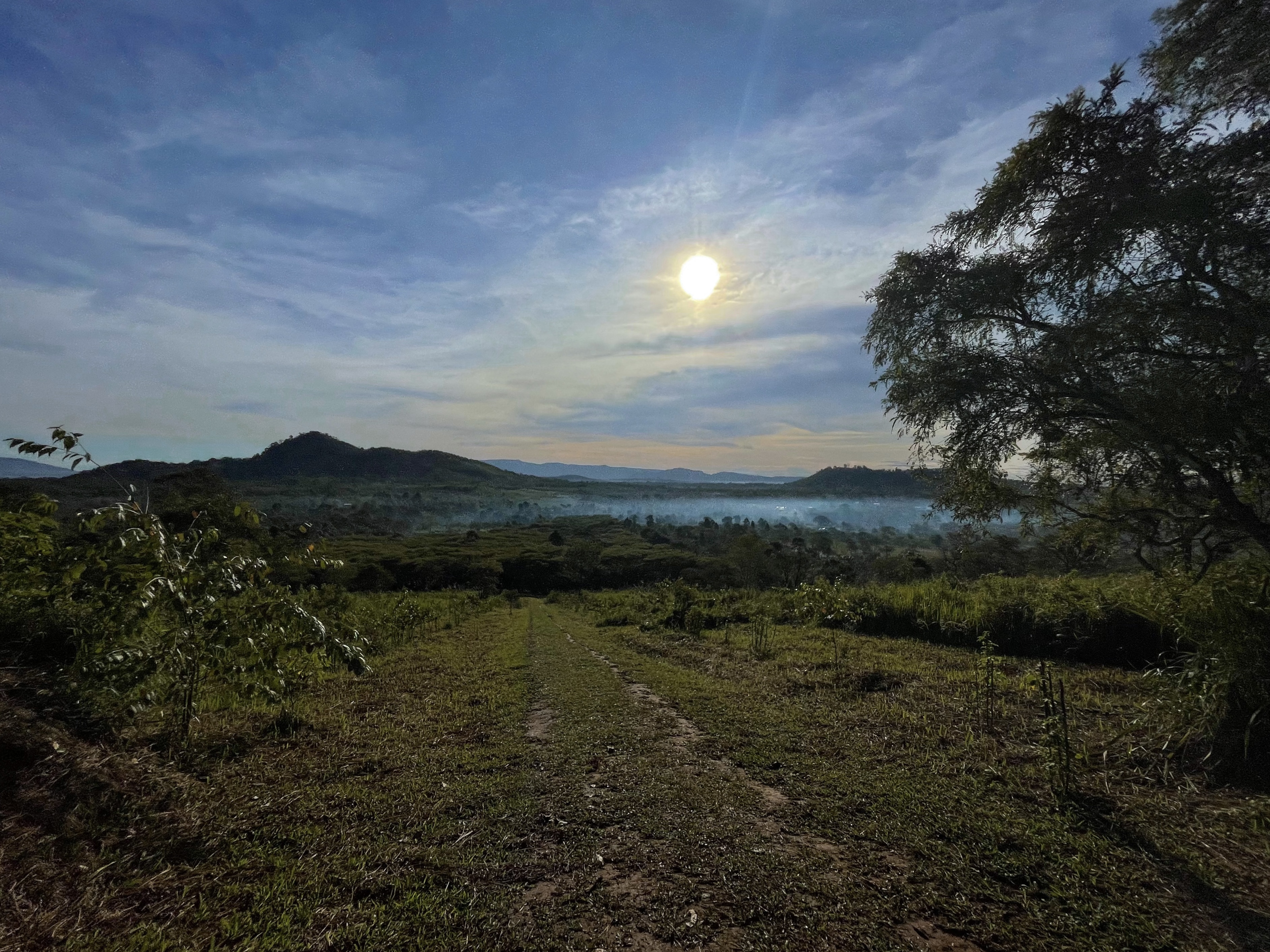
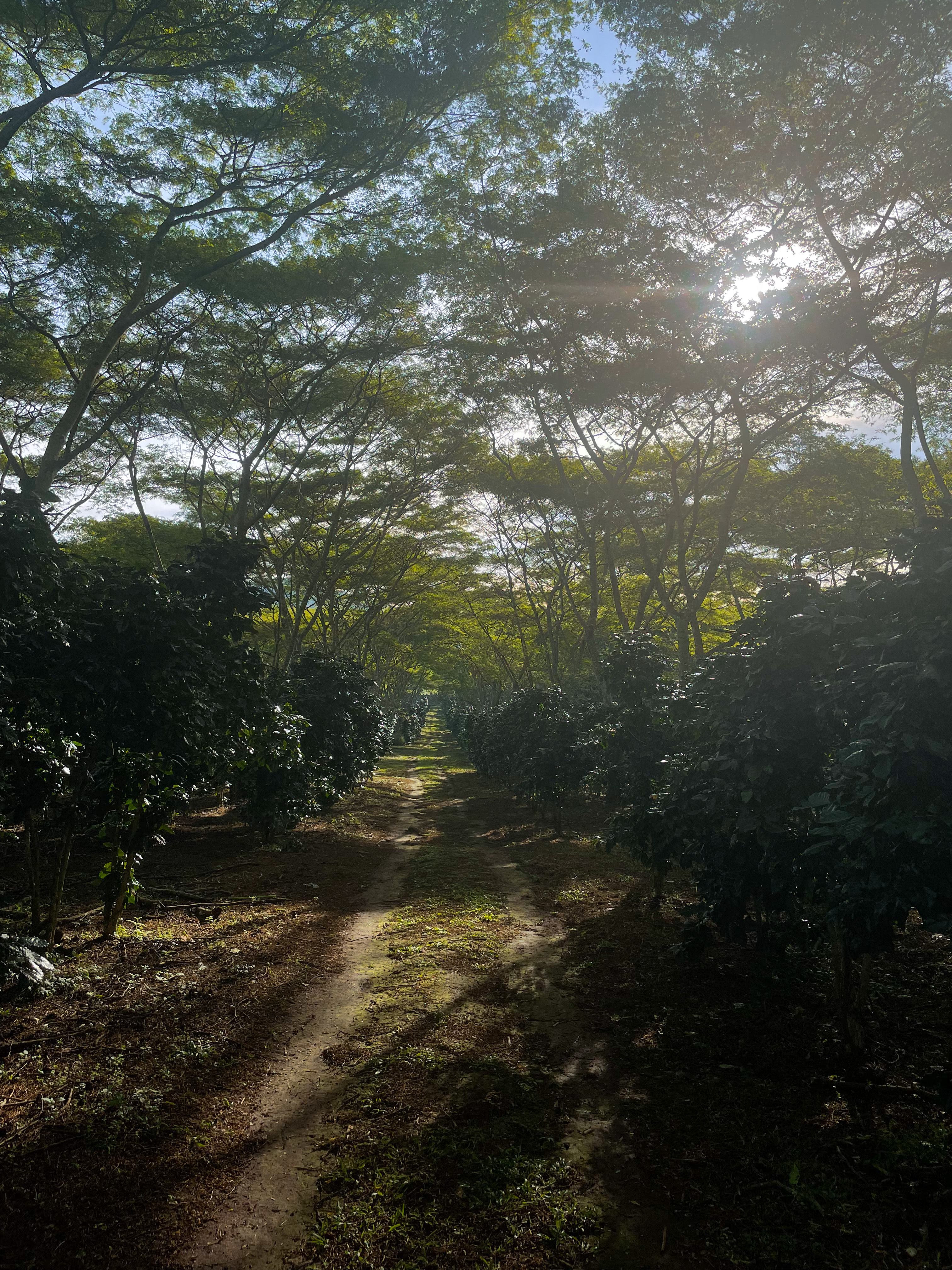
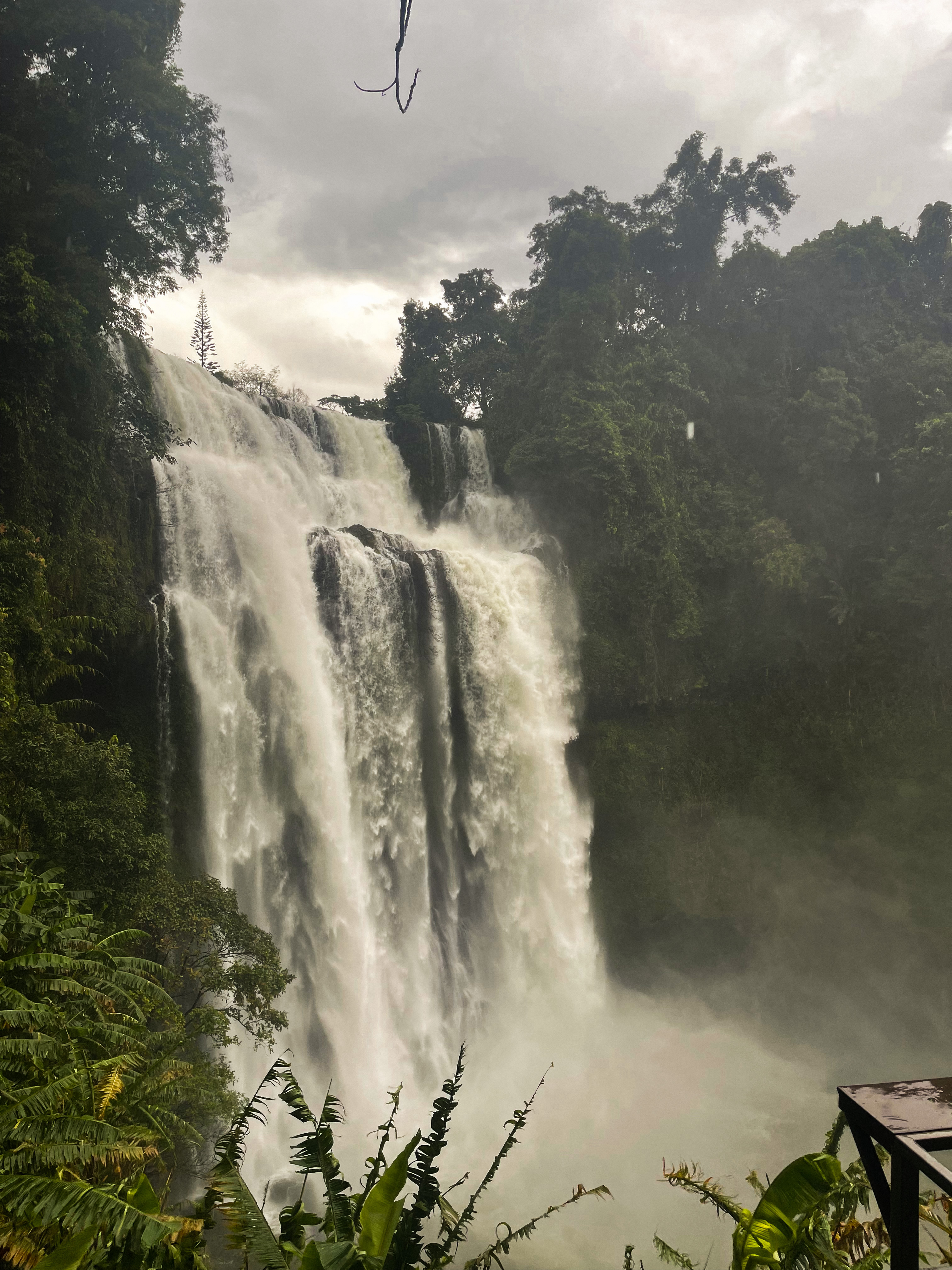
Being here, I could imagine living in a collective with good friends and people. I imagine this environment, and the community it could sustain, to be not unlike the Earthseed community Lauren ultimately founds at the end Octavia Butler’s novel, Parable of the Sower, even though that community is in northern California. But I am also not naïve about how fantastical that vision is. In an article about the movement of China’s middle class from cities to the countryside, Jacob Dreyer notes that the pastoral life of the new urbanites-turned-villagers relied on nearby urban resources; that the city, only 20 minutes away, provides the “infrastructure of modernity — the schools, hospitals, larger stores and shops, a train station,” that the residents still desire. To truly live out here, on the stunning Bolaven Plateau, is not necessarily easy nor simply idyllic. What I am looking for is likely some version of what those Chinese villagers have—what Dreyer has called a “dialectical interlocking” of modernity with what could be found in the countryside—the nature, the cultural traditions. But, of course I am—like the urbanites in China, I would like an escape from the alienation and competitiveness under capitalism, and I am in a position where I can dream of other possibilities. Yet, I still want many of the trappings of modernity delivered out from capitalism—it is somewhat of a paradox unless we can imagine an alternative way of living that doesn’t need or consume so much. Suggestions welcome.
MB
